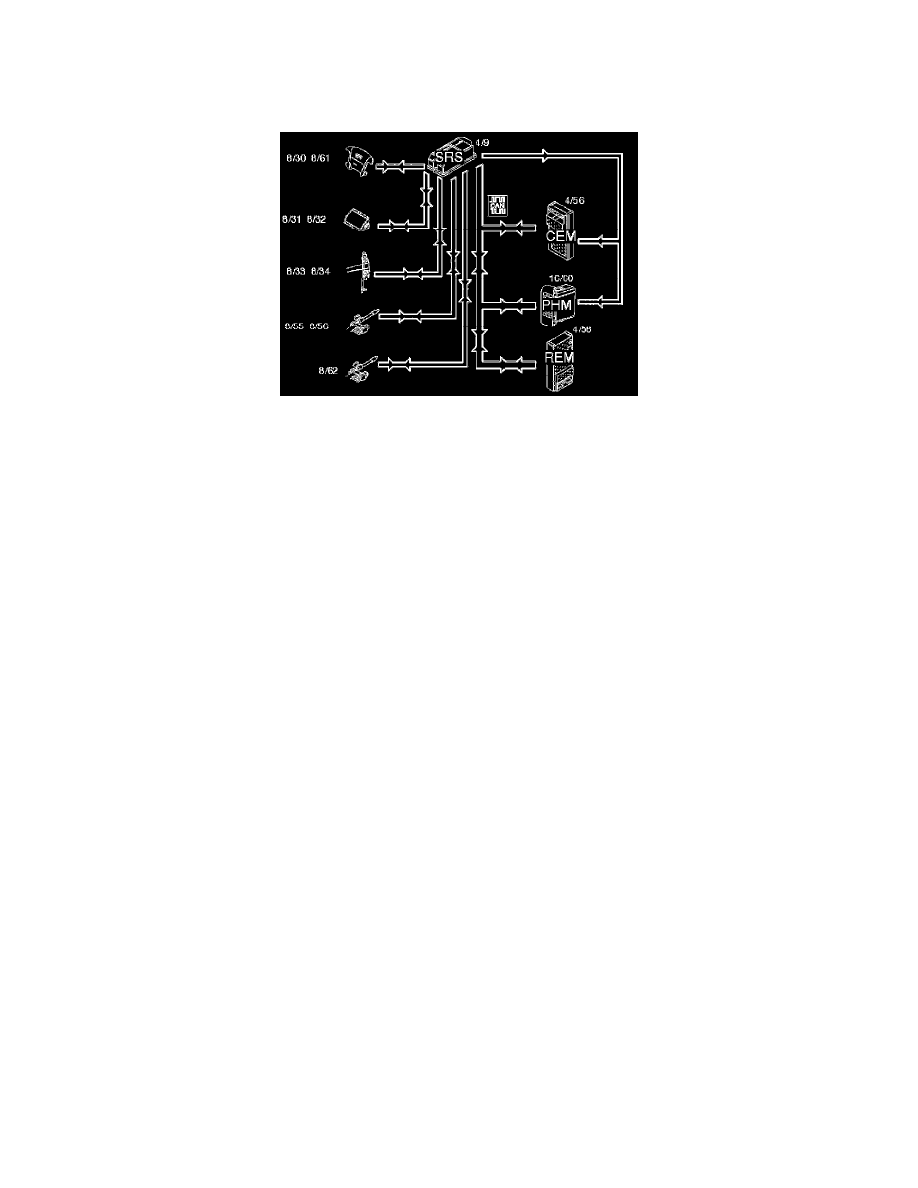V70 2.4T L5-2.4L Turbo VIN 58 B5244T3 (2002)

Impact Sensor: Description and Operation
Function In Event of A Frontal Collision
Function In Event Of A Frontal Collision
In the event of formal collision a function called single point sensing is used. This means that the collision pulse is only registered in one specific
location. This function is integrated in the supplemental restraint system module (SRS) (4/9) and is called a collision sensor. When the collision pulse is
sufficiently large an activation signal (current pulse) is transmitted to the front airbags and/or the seat belt tensioners.
The driver (8/30, 8/61) and front passenger (8/31, 8/32) airbags are deployed. The seat belt tensioners front (8/33.8/34) and rear are activated (8/55, 8/56
and 8/62).
When the collision protection system has been activated a collision signal is transmitted from the supplemental restraint system module (SRS) (4/9) to
the central electronic module (CEM) (4/56) and carphone module (PHM) (16/60) on a directly connected cable.
These two control modules ensure that;
-
The central locking system is unlocked,
-
the fuel pump (FP) is switched off,
-
the interior lighting is lit,
-
the warning lamps are lit,
-
the collision pulse is registered and
-
an automatic alarm is sent to CSC (customer service center), and to Volvo On Call (Plus) if applicable.
The following applies to structure week 9815-9949:
The collision pulse is registered in the supplemental restraint system (SRS) module. When the collision pulse is registered, the system is locked. The
system then initiates the following activations:
-
The SRS indicator lamp lights red.
-
No diagnostic trouble codes (DTCs) can be stored in the supplemental restraint system (SRS) module.
A collision status signal is also sent to the carphone module (PHM) and rear electronic module (REM) (4/58) on the Control Area Network (CAN).
The following applies to structure week 9950-:
The collision pulse is registered in the supplemental restraint system (SRS) module. When the collision pulse is registered the system is not locked. This
means that diagnostic trouble codes (DTCs) can be stored after a collision. The system lights the SRS indicator lamp.
A collision status signal is also sent to the carphone module (PHM) and rear electronic module (REM) (4/58) on the Control Area Network (CAN).
